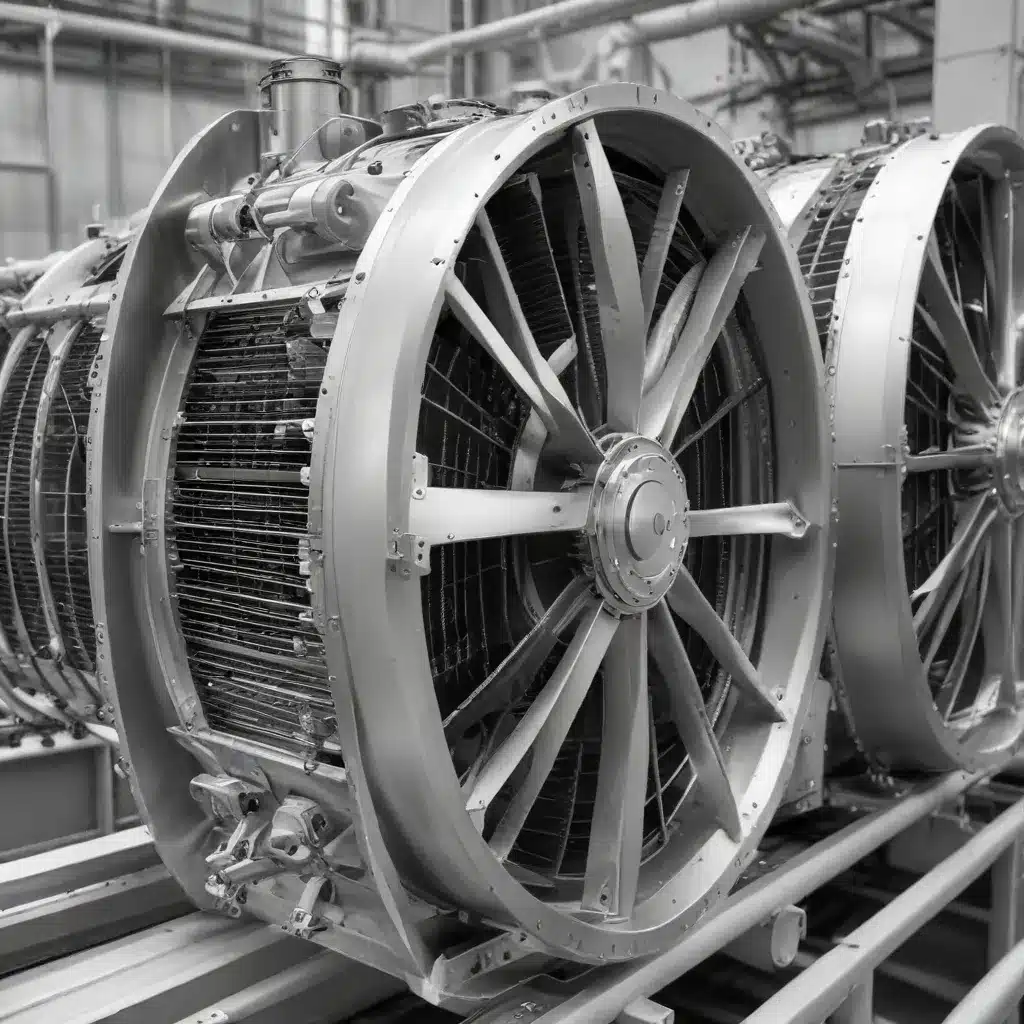
Maximizing Efficiency and Reliability with Comprehensive Monitoring Strategies
As a seasoned expert in the field of air-cooled heat exchangers, I’ve witnessed firsthand the transformative impact that predictive analytics and condition-based optimization techniques can have on maintenance practices. In today’s rapidly evolving industrial landscape, where operational efficiency and asset reliability are paramount, understanding and implementing these advanced strategies is crucial for staying ahead of the curve.
At the heart of effective air-cooled heat exchanger maintenance lies the ability to monitor and analyze critical performance data. By leveraging a combination of monitoring technologies, including vibration analysis, oil analysis, infrared thermography, and more, organizations can gain valuable insights into the health and behavior of their equipment. This comprehensive approach, as outlined by Allied Reliability, allows for the early detection of subtle variations and fluctuations that often go unnoticed with traditional maintenance methods.
Embracing the Power of Predictive Maintenance
Traditional time-based or reactive maintenance approaches are no longer sufficient to address the complexities of modern air-cooled heat exchanger systems. Predictive maintenance, on the other hand, utilizes advanced data analytics to forecast equipment failures and proactively schedule maintenance activities. This shift in mindset from “fixing it when it breaks” to “preventing it from breaking in the first place” can have a profound impact on operational efficiency, cost savings, and overall asset reliability.
By deploying a range of predictive maintenance technologies, air-cooled heat exchanger operators can gain a deeper understanding of their equipment’s condition and performance. As mentioned in the source material, these technologies can include vibration analysis, oil analysis, infrared thermography, and more. Through the integration of these various monitoring techniques within a single platform, such as Allied Reliability’s SmartCBM software, operators can identify the smallest variations and fluctuations that may indicate impending failures.
Condition-Based Optimization: Tailoring Maintenance to Individual Assets
While predictive maintenance lays the foundation for proactive care, condition-based optimization takes it a step further. This approach involves customizing maintenance strategies to the unique characteristics and operating conditions of each individual air-cooled heat exchanger. By closely monitoring the asset’s performance data and specific failure modes, maintenance plans can be fine-tuned to address the unique challenges faced by each piece of equipment.
The source material emphasizes the importance of a “customized data monitoring solution” that considers the specific needs and risks associated with each asset. This personalized approach ensures that maintenance activities are precisely targeted, effectively mitigating design-failure modes and maximizing equipment reliability and availability.
Leveraging the Industrial Internet of Things (IIoT) for Comprehensive Monitoring
The rise of the Industrial Internet of Things (IIoT) has transformed the way we approach air-cooled heat exchanger maintenance. With the integration of smart sensors, wireless communication, and advanced data analytics, operators can now gather and analyze real-time performance data from their equipment, even in remote or hard-to-access locations.
As mentioned in the source material, the SmartCBM software from Allied Reliability is designed around reliability and the IIoT, providing a centralized platform for data collection, analysis, and prescriptive maintenance recommendations. By automating data gathering and streamlining the interpretation of complex information, IIoT-enabled solutions empower operators to make more informed, data-driven decisions, ultimately enhancing the overall efficiency and reliability of their air-cooled heat exchanger systems.
Turning Data into Actionable Insights: The Role of Business Risk Index
While comprehensive monitoring and data analytics are crucial, the true value lies in the ability to translate this information into actionable insights that drive meaningful improvements. This is where Allied Reliability’s Business Risk Index algorithm comes into play, providing a holistic understanding of both known and unknown risks associated with air-cooled heat exchanger operations.
The source material highlights how the Business Risk Index algorithm not only identifies and prioritizes known equipment defects and risks, but also sheds light on the underlying, “unknown risks” that can catch operators off guard. By incorporating this innovative approach, maintenance strategies can be tailored to address the most pressing and impactful issues, ensuring that resources are deployed in the most effective manner.
Enhancing Safety, Productivity, and Profitability
Implementing a comprehensive, condition-based maintenance program for air-cooled heat exchangers can yield far-reaching benefits for organizations across various industries. As mentioned in the source material, companies that embrace these advanced monitoring and optimization techniques have reported healthier and more reliable equipment, a safer work environment for employees, and improved productivity and operating margins.
By proactively addressing equipment issues, reducing unplanned downtime, and extending the lifespan of critical assets, air-cooled heat exchanger operators can achieve a significant competitive edge. Moreover, the data-driven insights gained through predictive analytics and condition-based optimization can inform strategic decision-making, helping organizations allocate resources more effectively and make informed investments in their equipment and infrastructure.
Conclusion: Embracing the Future of Air-Cooled Heat Exchanger Maintenance
In a rapidly evolving industrial landscape, air-cooled heat exchanger operators must be willing to embrace the transformative power of predictive analytics and condition-based optimization techniques. By leveraging comprehensive monitoring strategies, integrating the latest IIoT technologies, and capitalizing on innovative tools like the Business Risk Index, organizations can unlock new levels of efficiency, reliability, and profitability.
As an industry expert, I strongly encourage air-cooled heat exchanger operators to explore these cutting-edge maintenance practices and partner with reliability-focused service providers, such as Allied Reliability, to unlock the full potential of their critical assets. By doing so, they will not only safeguard the longevity and performance of their air-cooled heat exchangers but also position their businesses for long-term success in an increasingly competitive and dynamic market.

